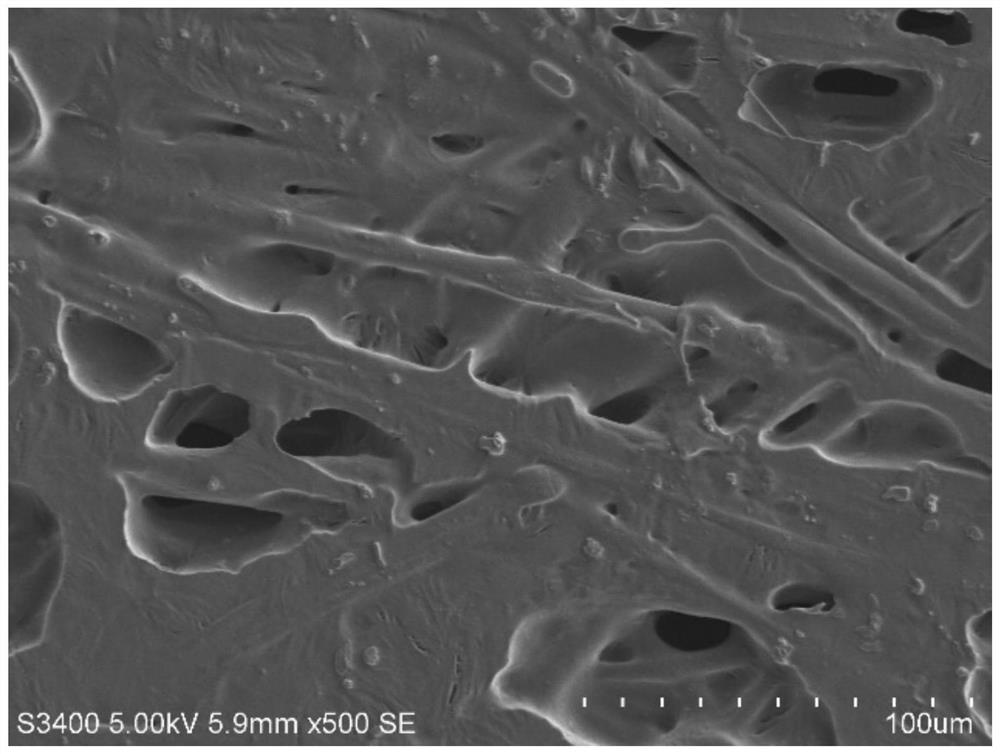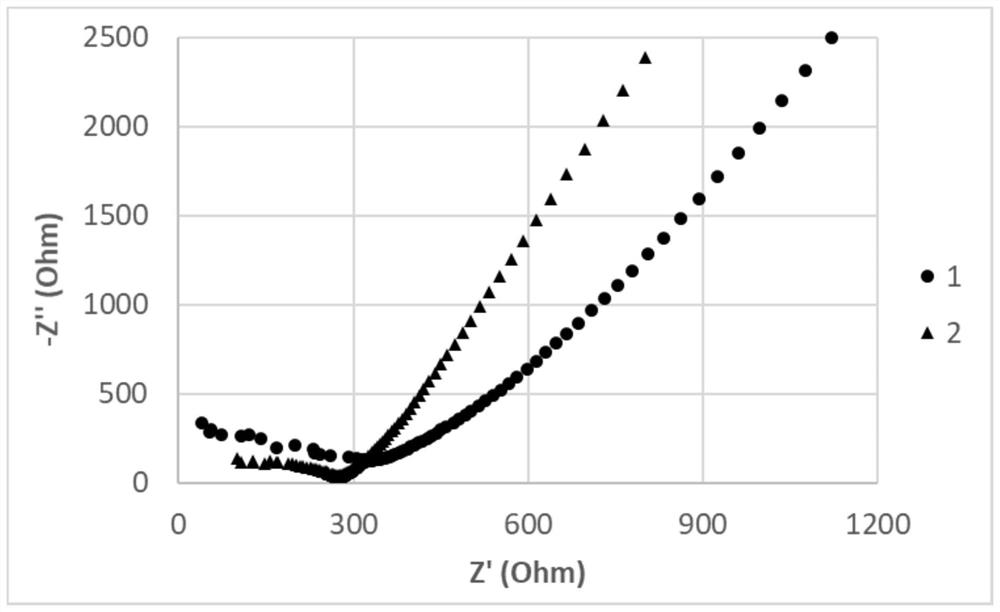Method for polyurethane-based composite electrolyte membrane and polyurethane-based composite electrolyte membrane
A composite electrolyte membrane and polyurethane technology, which is applied in composite electrolytes, circuits, electrical components, etc., can solve the problems that the film cannot meet the mechanical strength requirements of the separator, the ability to dissolve lithium salts and complex lithium ions is weak, and it cannot be efficiently mass-produced. Achieve the effect of increasing the amorphous area, facilitating migration, and good dimensional stability
- Summary
- Abstract
- Description
- Claims
- Application Information
AI Technical Summary
Problems solved by technology
Method used
Image
Examples
Embodiment 1
[0038] Step 3: Mix the PU-PDMS copolymer prepared in the above step 2 with the lithium salt LiTFSI in a mass ratio of 30% (LiTFSI accounts for 30% of the mass of the PU-PDMS copolymer), and then add it to a twin-screw extruder. The machine heating temperature is 170°C, the melt-blown die spinneret diameter is 0.4mm, the mold temperature is 170°C, the hot air temperature is 200°C, the air pressure is 0.3MPa, and the flow rate is 4.5ml / min. The reinforcing fiber material is PP, the PP melt-blown die spinneret diameter is 0.4mm, the die temperature is 250°C, the hot air temperature is 280°C, the air pressure is 0.3MPa, and the PP melt flow rate is 2ml / min. The fiber filaments ejected from the two dies are uniformly mixed in the air and then settled on the receiving device. The distance between the spinneret holes of the die and the fiber receiving device is 25cm, the speed of the receiving device is 80-120m / min, and the fiber diameters are all at 1-5 μm.
[0039] Step 4: Pass th...
Embodiment 2
[0042] Step 3: The PU-PDMS copolymer prepared in the above step 2 and the lithium salt LiTFSI with a mass ratio of 30% are mixed uniformly and then added to a twin-screw extruder. mm, the mold temperature is 170°C, the hot air temperature is 200°C, the air pressure is 0.3MPa, and the polymer flow rate is 4.5ml / min. The PP melt-blown die has a spinneret diameter of 0.4 mm, a die temperature of 250 °C, a hot air temperature of 280 °C, an air pressure of 0.3 MPa, and a PP melt flow rate of 2 ml / min. The fiber filaments ejected from the two dies are uniformly mixed in the air and settle on the receiving device. The distance between the spinneret holes of the die and the fiber receiving device is 25cm, the speed of the receiving device is 40-80m / min, and the fiber diameter is 1-5μm.
[0043] Step 4: Pass the above mixed fiber filaments through a pressure roller at 50-150°C, adjust the pressure and temperature of the pressure roller to melt and bond the polyurethane-polysiloxane-ba...
Embodiment 3
[0045] Step 3: Mix the PU-PDMS copolymer prepared in step 2 with lithium salt LiTFSI with a mass ratio of 30% uniformly and then add it to a twin-screw extruder. The heating temperature of the extruder is 150° C. , the mold temperature is 150°C, the hot air temperature is 200°C, the air pressure is 0.3MPa, and the polymer flow rate is 4.5ml / min. The reinforcing fiber material is PP, the PP melt-blown die spinneret diameter is 0.4mm, the die temperature is 250°C, the hot air temperature is 280°C, the air pressure is 0.3MPa, and the PP melt flow rate is 2ml / min. The fiber filaments ejected from the two dies are uniformly mixed in the air and settled on the receiving device. The distance between the spinneret holes of the die and the fiber receiving device is 25cm, the speed of the receiving device is 80-120m / min, and the fiber diameter is 1-6μm.
[0046] Step 4: Pass the above mixed fiber filaments through a pressure roller at 50-150°C, adjust the pressure and temperature of th...
PUM
| Property | Measurement | Unit |
|---|---|---|
| diameter | aaaaa | aaaaa |
| speed | aaaaa | aaaaa |
| thickness | aaaaa | aaaaa |
Abstract
Description
Claims
Application Information
 Login to View More
Login to View More - R&D
- Intellectual Property
- Life Sciences
- Materials
- Tech Scout
- Unparalleled Data Quality
- Higher Quality Content
- 60% Fewer Hallucinations
Browse by: Latest US Patents, China's latest patents, Technical Efficacy Thesaurus, Application Domain, Technology Topic, Popular Technical Reports.
© 2025 PatSnap. All rights reserved.Legal|Privacy policy|Modern Slavery Act Transparency Statement|Sitemap|About US| Contact US: help@patsnap.com



